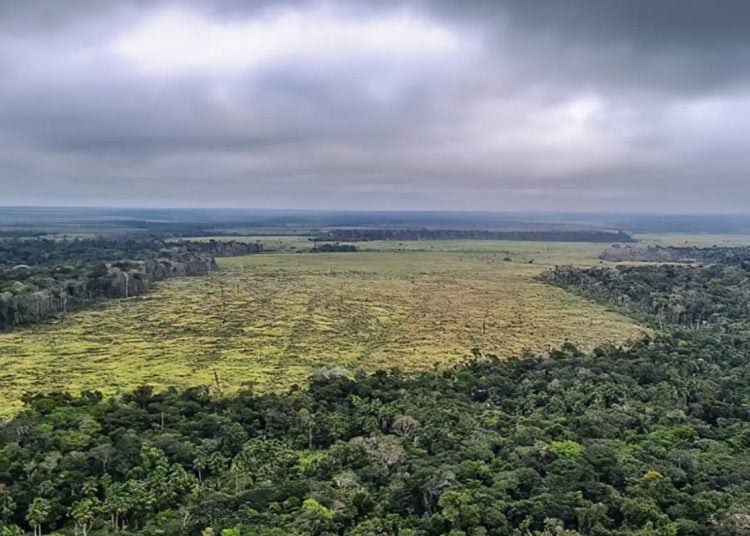Deforested areas in the Amazon increased by 18% between August 2024 and March 2025, compared to the same period the previous year. A total of 229,000 hectares of forest were cleared – an area larger than Palmas, the capital of Tocantins – according to data released this Friday (April 25) by the Amazon Institute of People and the Environment (Imazon).
Deforestation during the rainy season, such as in March, is a warning sign for the need to strengthen monitoring actions and prepare for the dry season, as explained by Imazon researcher Larissa Amorim.
“It’s a warning that monitoring actions in critical areas should be intensified before the dry season in the Amazon begins, the so-called Amazonian summer, when deforested areas tend to be larger,” she says.
The researcher believes that effective deforestation control measures could lead to a decline by the end of the period in August. “We still have four months to reverse this increase,” she states. The Amazonian summer begins in July.
Despite the increase, this level of deforestation is nearly 60% lower than what was recorded between August 2020 and March 2021, when Imazon reported the highest level of deforestation since monitoring began, with over half a million hectares of forest destroyed.
The following periods, between August 2021 and March 2022, and August 2022 and March 2023, rank second and third, respectively, in terms of deforestation records in the Amazon. Imazon has been monitoring the Amazon biome since 2008.
The analysis shows that 79% of the most recent deforestation was concentrated in private areas, such as farms. The remaining deforestation occurred in settlements (16%), conservation units (5%), and Indigenous lands, with just 1% of the deforested area.
The most devastated conservation unit during the period was the Tapajós Environmental Protection Area (APA), located in the state of Pará, spanning the municipalities of Itaituba, Jacareacanga, Novo Progresso, and Trairão. Heavily affected by illegal mining, the APA saw an area deforested equivalent to 700 football fields.
Mato Grosso Leads the Devastation
In March, three states accounted for 80% of the deforestation recorded in the Amazon. Mato Grosso topped the list of the region’s largest deforesters that month, with 6,500 hectares of forest cleared, representing 39% of the biome’s deforestation.
Amazonas ranked second, with 3,900 hectares (23%), and Pará came in third, with 2,900 hectares.
In January, Mato Grosso was also the main contributor to the biome’s deforestation, responsible for 45% of the destruction during that month. In February, Roraima led the ranking, followed by Mato Grosso in second place.
Government Response
In a statement sent to BdF, the government said, “The official data for real-time monitoring of deforestation alerts and forest degradation is provided by the Deter system from the National Institute for Space Research (Inpe). According to their data, from August 2024 to March 2025, there was a 9.7% decrease in areas under deforestation alerts in the Amazon compared to the period from August 2023 to March 2024.”
“Considering the same timeframe, according to the estimates from Deter/Inpe, forest degradation in the Amazon increased by 154% due to wildfires, which were intensified by the second consecutive year of extreme drought in the biome. Therefore, the scenario did not result from increased illegal logging,” the statement continued.
Finally, the government stated that, “on the other hand, from December 2024 to March 2025, Deter/Inpe identified a 69% reduction in forest degradation in the Amazon compared to the period from December 2023 to March 2024. This significant drop proves that the previous spike was mainly due to the unusual fires that occurred between August and November 2024.”




